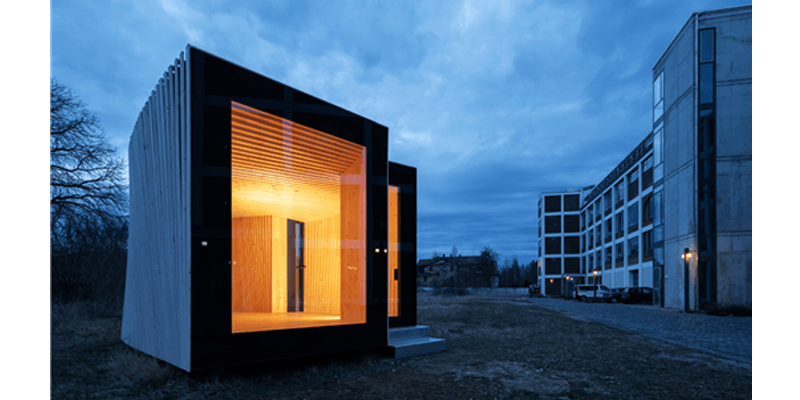Digital Fabrication of Performative Wood Envelopes
Downloads
DOI:
https://doi.org/10.7480/jfde.2021.1.5398Keywords:
Computational Design, timber, digital fabrication, layer-reduced construction, wood, façade, envelopeAbstract
The project seeks to create a building envelope that functions as structure, enclosure, and insulation, which is assembled from one solid timber construction element type. Wood has clear environmental benefits when compared to other standard construction materials such as steel and concrete, a good strength-to-weight ratio, relatively high thermal insulation, and low production costs. This research seeks to leverage these characteristics to simultaneously reduce the number of material layers in timber building envelopes while improving the building physics performance. Thus, the environmental impact of buildings can be reduced during planning, construction, operation, and disposal. The project proposes a system that reduces material layers and improves envelope performance by combining contemporary fabrication technologies with traditional woodworking techniques. Design tools should allow for compelling formal opportunities and facilitate fabrication and construction. The system manifests as a free-form, curvilinear log-cabin. Solid timber beams are used to minimise binders and fillers found in composite wood products, and the entire primary construction is achieved with pure wood joinery. CNC machining allows for the precise joining of members to achieve robust, easy-toassemble, structural and airtight façades. By sawing deep slits into solid timber beams, the resulting air chambers improve thermal insulation values up to 30% compared to comparable solid wood assemblies while also relieving naturally occurring internal stresses. Computational design algorithms generate toolpaths and construction data directly from simple input curves, enabling direct coordination of architects, engineers, and contractors. To evaluate the system, multiple prototypes are fabricated to test constructability, thermal conductance, and airtightness, including a demonstrator building to test full-scale implementation. Laboratory tests and the successful completion of the IBA: Timber Prototype House demonstrate the potential for this renewable material to fulfil the requirements of contemporary building envelopes and open the door for the development of all-wood multi-storey façades.
How to Cite
Published
Issue
Section
License
Copyright (c) 2021 Oliver Bucklin, Achim Menges, Oliver Krieg, Hans Drexler, Angela Rohr, felix Amtsberg

This work is licensed under a Creative Commons Attribution 4.0 International License.
Authors or their institutions retain copyright to their publications without restrictions.
